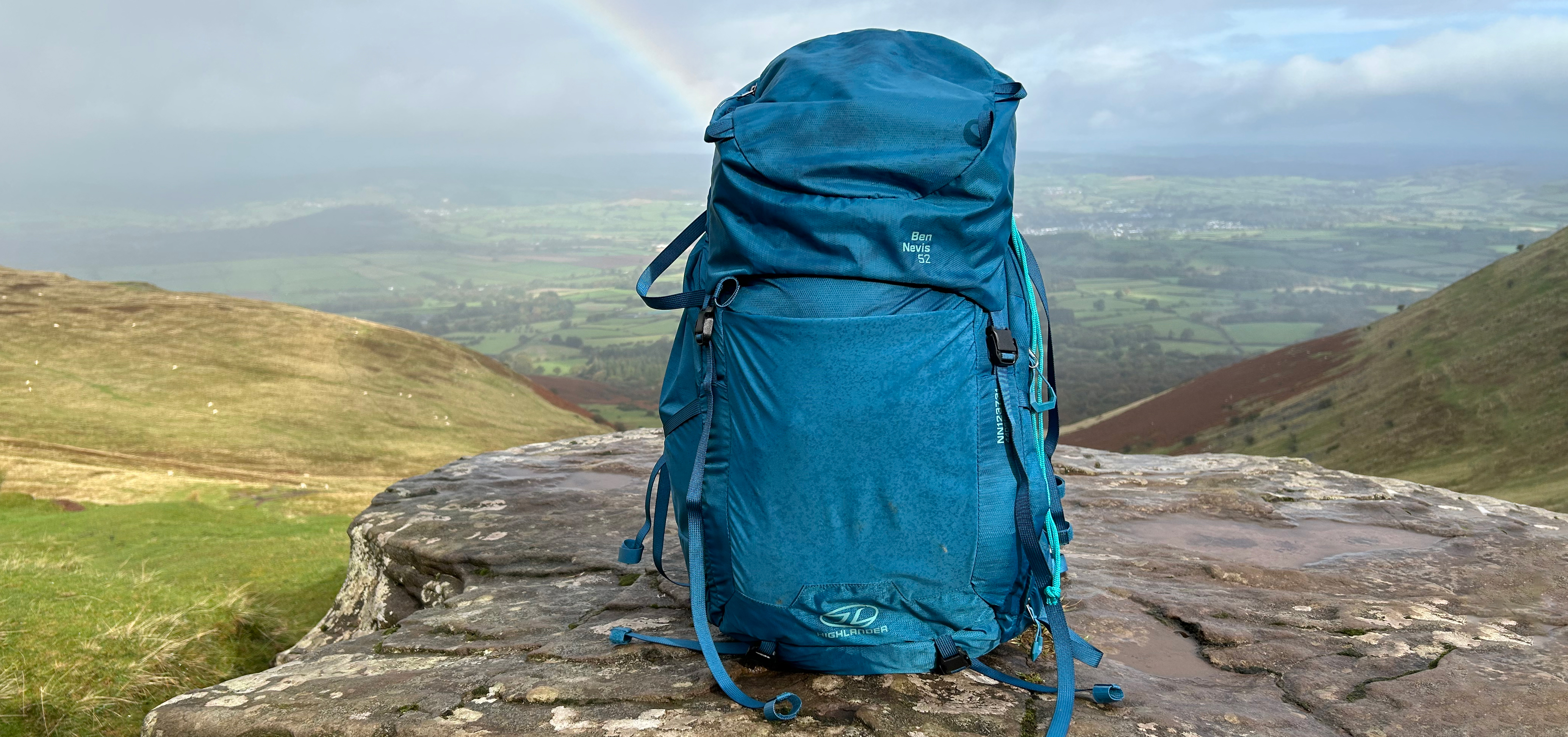
Highlander is an unpretentious Scottish brand that was founded to lower the entry cost involved with exploring the outdoors. Since the 1980s, it has created solid outdoor kit at an affordable price point, with the majestic Scottish Highlands as its testing ground. For the uninitiated, the weather in Scotland's uplands can be very challenging indeed, often experiencing wet and windy conditions in the warmer months and sub-Arctic cold (or, failing that, wet and windy again) in the winters – perfect for putting gear through its paces.
Highlander's Ben Nevis Rucksacks are its flagship hiking backpack range. Named after Scotland’s highest and most famous mountain, the newest 52- and 65-liter versions have won British awards for their design and performance. I was eager to see what all the fuss was about and was delighted to test the Ben Nevis on the UK’s trails.
First impressions

RRP: £124.99 (UK)
Volume: 52L
Weight: 1.46kg / 3.2lbs
Sizes: One size (adjustable back system)
Versions: 65L and 52L men’s and women’s versions
Fabric: 200D Nylon PU Coating
Colors: Grey / Petrol
I’ve tested several pieces of Highlander kit in the past, including the Serenity Sleeping Bag, and I’m always impressed with the quality, especially given the great value of the brand's products. The Ben Nevis has the look and feel of a top-quality mountain pack but at a very reasonable price. Scratch beneath the nylon surface and it’s clear that it’s mostly well thought out, with a number of subtle features that can make a big difference.
As is often seen in the best daypacks and bigger backpacks these days, there’s a safety whistle integrated into the chest strap. Gear loops on the lid allow for the attachment of additional items on long missions. The main compartment is accessible from the top and the side. A large, stretchy mesh front compartment and mesh side pockets provide plenty of on-the-go storage. It’s got everything you’d expect and it looks pretty smart too.
Storage options
The Ben Nevis has almost as many storage options as its namesake has classic winter climbing routes. It’s got all the usual suspects for a medium-to-large capacity pack, including a spacious main compartment with an elasticated divider on the back for separating items or stashing a hydration bladder. There’s a fabric loop with Velcro fastening at the top of the compartment for attaching the reservoir, as well as an exit point for a drinking tube. Usefully, this main storage area is also accessible via a side zipper, as well as from the drawcord opening on the top. This allows the wearer to access items towards the bottom of the pack without having the faff of rummaging through everything.
The lid has a zippered top pocket and four gear loops above, handy for attaching items that clip in, such as carabiners. The inside of the lid hosts another zippered pocket, complete with an internal key clip and a panel displaying safety information and packing guidance – a nice touch. Handy zippered hip belt pockets, always useful for headlamps or gels, complete the lineup of secure storage options.
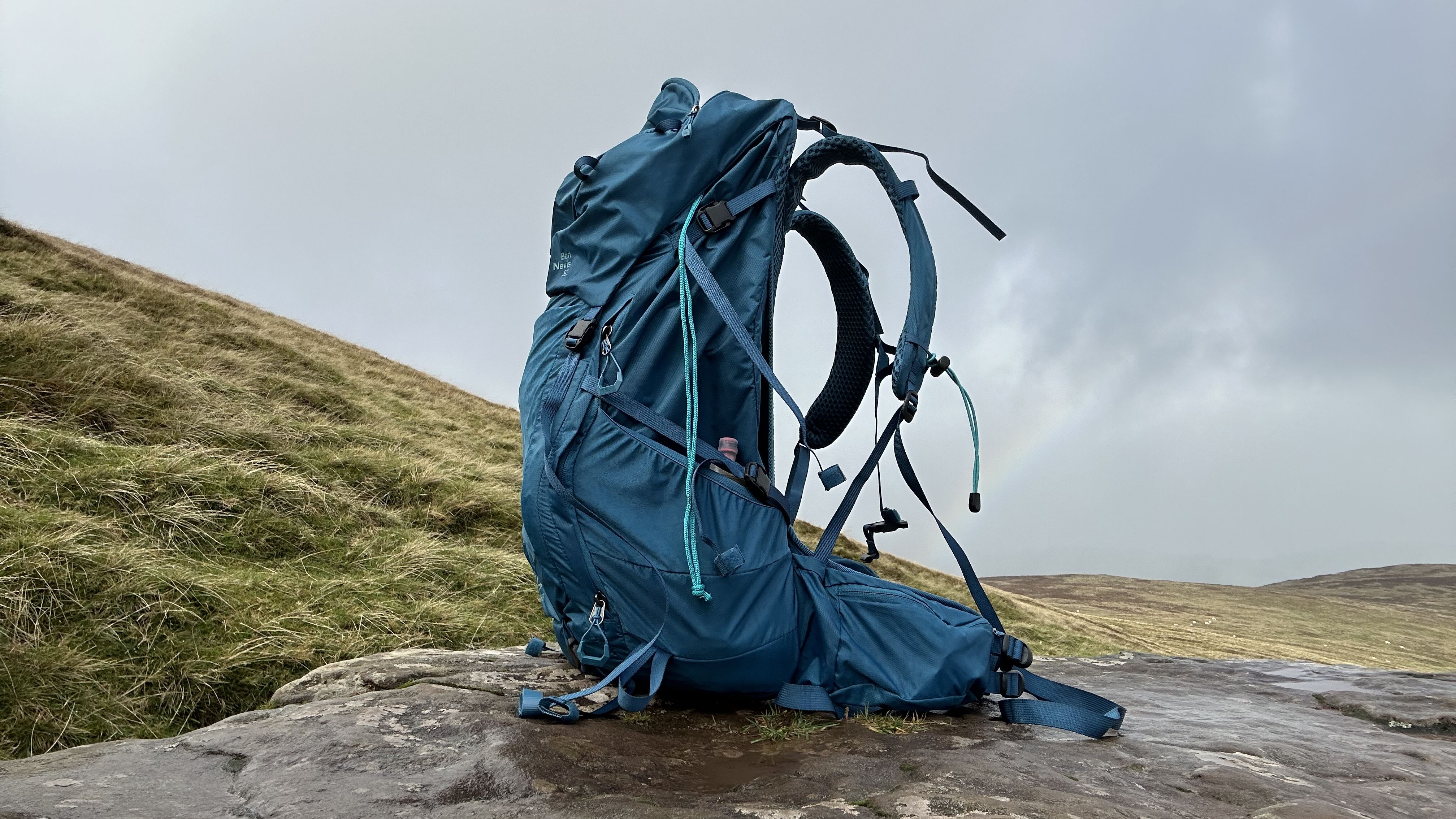
In terms of on-the-go storage, the huge front mesh pocket is nicely elasticated and perfect for stashing topo maps or that hiking fleece that gets a little too toasty on the long ascents. The side pockets provide easy access to water bottles or similar, which can be secured using the side compression straps.
It wouldn’t be a pack worthy of Ben Nevis’ name if there was no ice axe attachment, though there’s only one so it’s not a pack for more technical mountaineering routes. Likewise, trekking poles have also been considered. Strap loops with buckles on the bottom of the pack provide the option of securing a sleeping pad or similar on the outside. This is useful on the 52L version particularly, as fitting all your camping gear in could be a bit of a squeeze, depending on the kit you’ve got.
Stashed away in the bowels of the pack beyond a Velcro fastening is a rain cover. I’m not a huge fan of these, preferring the option of multiple internal dry bags. These rain covers have a habit of blowing away and littering the backcountry, while they also make it difficult to access different parts of the pack when in use. However, to give Highlander credit, it has had the great idea of printing emergency survival tips in high visibility print on the cover. These include ground to air signals and international distress signals, with English, French, Italian, Spanish and German speakers all catered for.
Other features
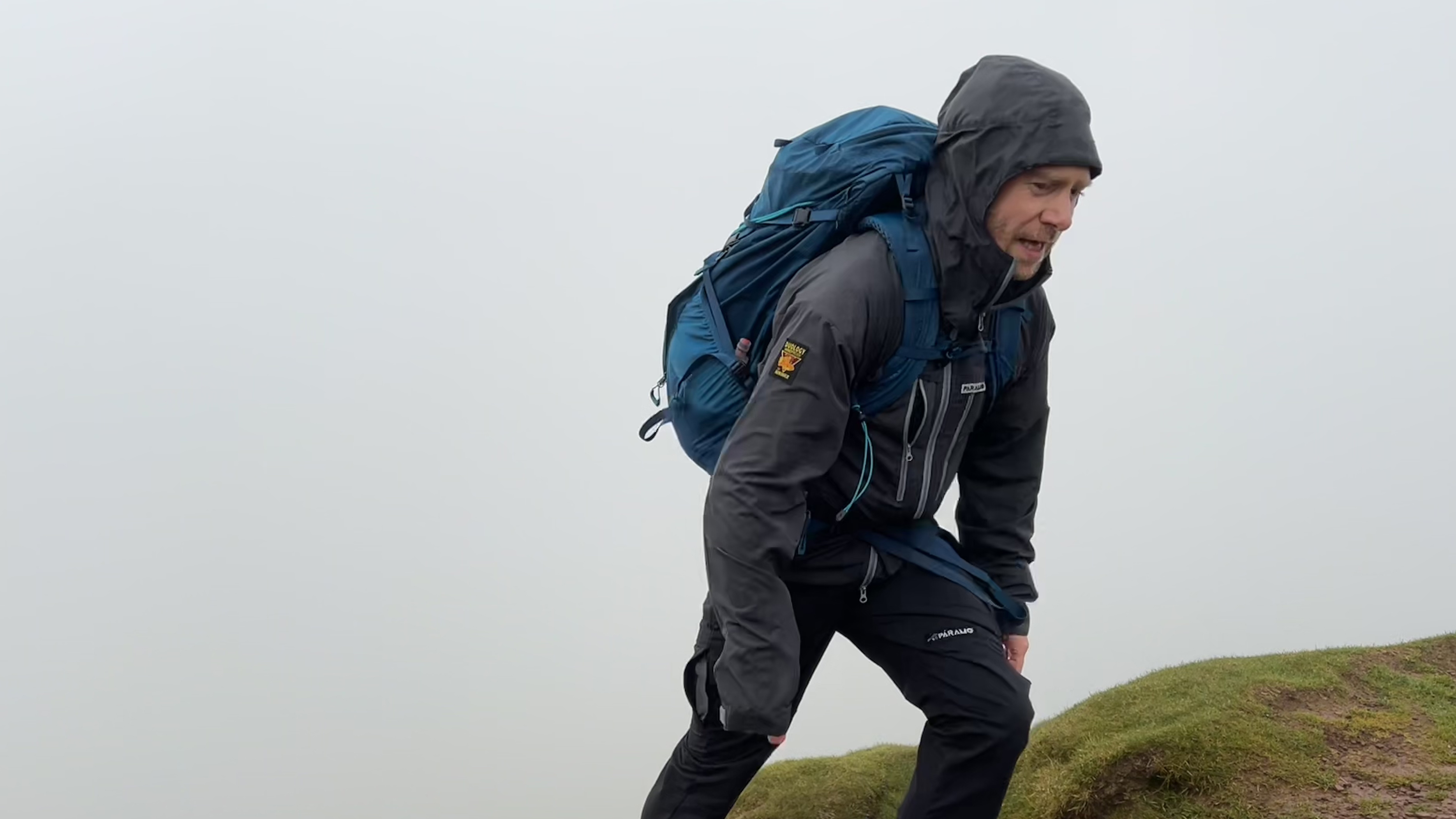
The main fabric is a 200D nylon with PU coating, which should provide a good level of durability for a hiking pack, on a par with something like Fjällräven’s Abisko Friluft 45.
Tailoring the fit is easy with the Ben Nevis, as the harness system is fully adjustable and the back panel can be moved up and down until the optimum is found. The hip belt features a satisfyingly large plastic buckle and dual webbing straps for fine tuning the fit and stabilizing the load. The size of the strap loop makes this very easy to do, even when wearing gloves. Unlike others on the pack, these straps don’t have smart Velcro tidies that allow you to tidy them away. This is a bit of an issue, as I'd often end up with quite a surplus here – more on this in a mo.
Other nods to the Scottish mountains includes the fact that the pack comes with a 282 year lifetime warranty. Why 282 exactly? This is the number of peaks in Scotland above 3,000 feet, categorized by British mountaineer Sir Hugh Munro. The pursuit of ascending all 282 peaks is a popular peak bagging challenge for those who love the Highlands.
Meet the reviewer
On the trails
I’ve put the Ben Nevis through its paces, walking sections of England’s classic Pennine Way long-distance trail and shouldering it for adventures in Wales’ Bannau Brycheiniog (Brecon Beacons) National Park. The weather gods served up a whole load of rain to march through. At times, it was positively ‘driech’, as they say in the Highlands.
Now, one of the very first things that happened was that I managed to pull the chest strap clean off its runner by being too vigorous with tightening. The exact same thing happened when I was testing the Osprey Hikelite 26, so perhaps the problem is my overzealousness rather than the kit. However, this did ring alarm bells in terms of the overall durability of the pack. Unable to fix it, I was left without the use of the chest strap for the duration of the test period – though I was able to conjure up a workaround by looping the strap through itself.
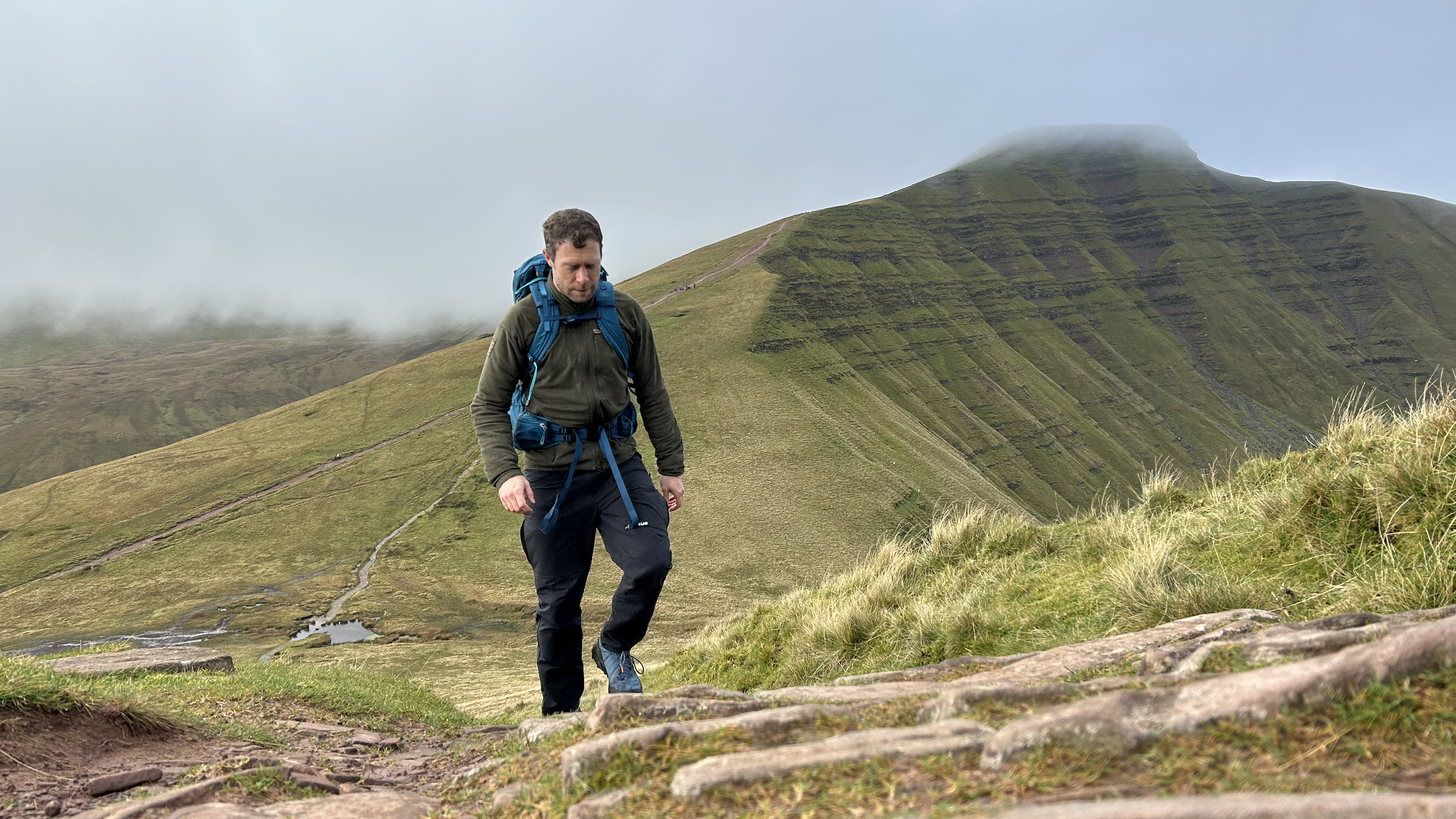
Nonetheless, even without the proper use of the chest strap, the Ben Nevis made for a comfortable carry, thanks to the ample padding in the shoulder straps, hip belt and suspended back system. Finding the right fit was easy with the adjustable back system, which is moved up and down and uses Velcro to attach to the suspended back panel. Throughout the test, the pack coped well with precipitation, even for several hours of consistent, moderately heavy rain – and all without using the rain cover.
The pack is really easy to manipulate – everything seems to have been designed with ease of use in mind. The main compartment’s drawcord features a fabric loop at the opposite end of the cord, which makes it easy to open quickly and with gloved hands. Speaking of hiking gloves, every zipper has a length pull cord, while the dual webbing strap that tightens the hipbelt is super easy to tighten and loosen.
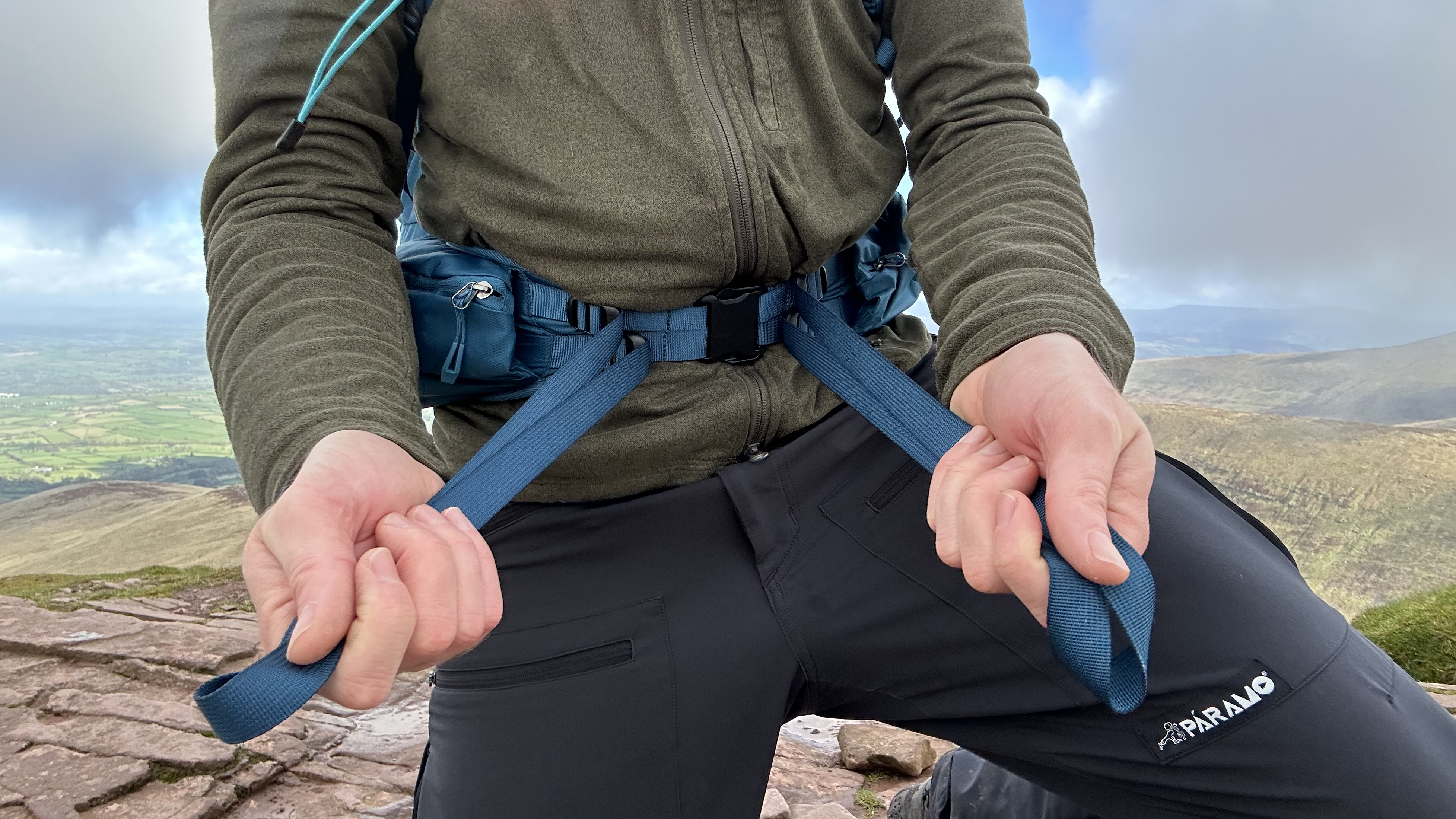
However, this dual webbing strap system is not without a downside. I’ve got quite a slim waist for a bloke, possibly due to my penchant for running coupled with my aversion to ultra-processed foods. When fully tightened, I had quite a bit of excess strap and I had to figure out what to do with it all, especially when it was windy. I’d either tie it off, which negates the benefit of being able to tighten and loosen quickly, or tuck it into my hiking pants, which wasn’t ideal.
The mesh compartment and pockets are really handy for stashing items on the fly, though I’ve noticed a small hole has already appeared in the front mesh, which again raises long term durability concerns.







